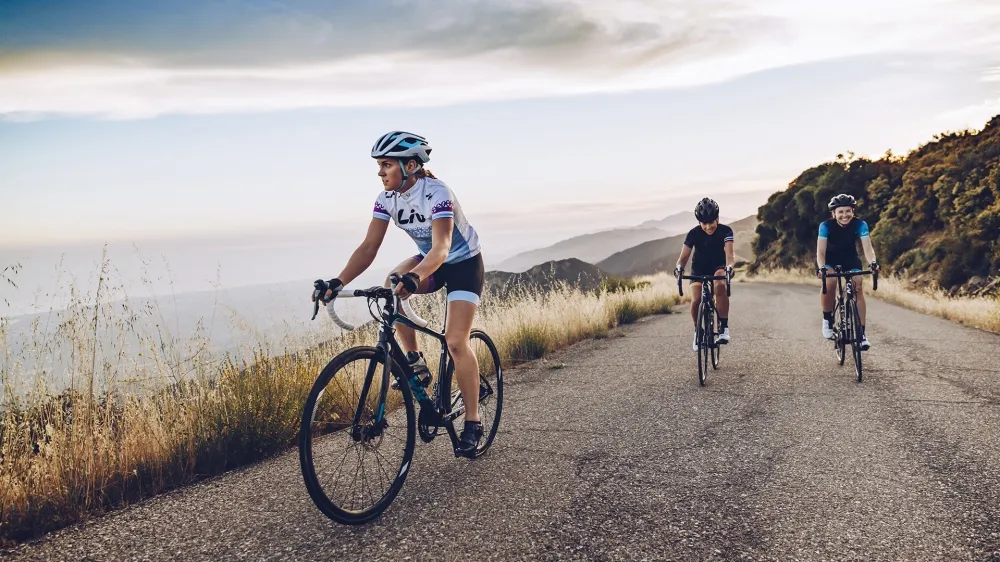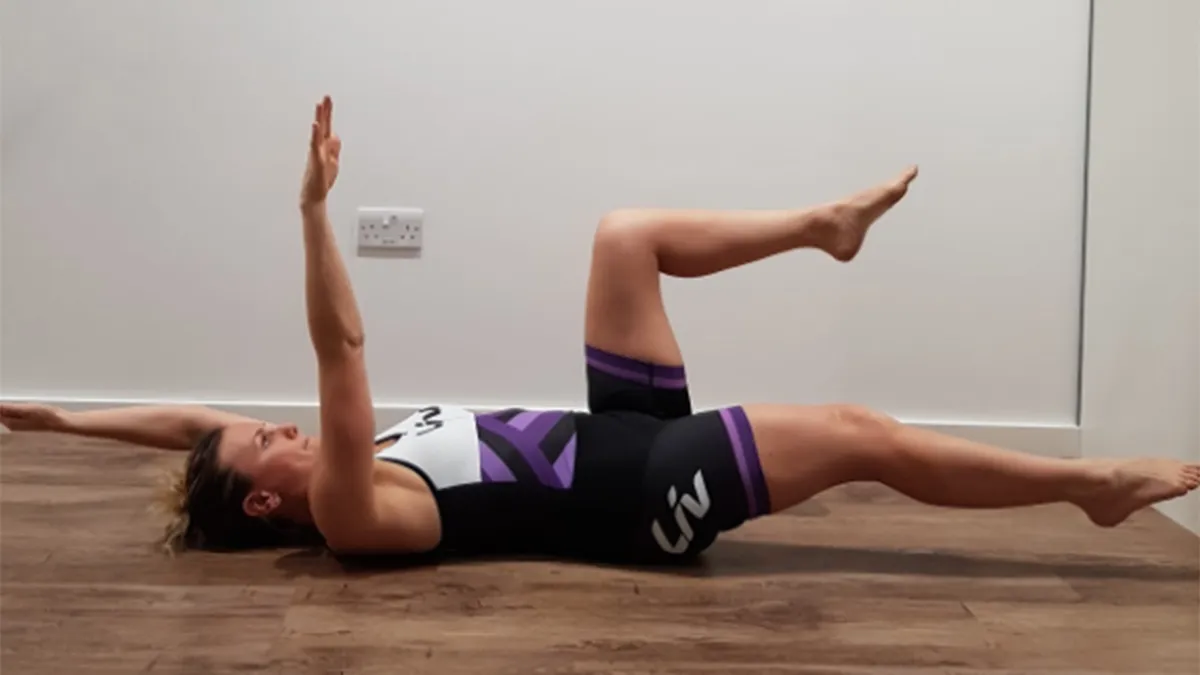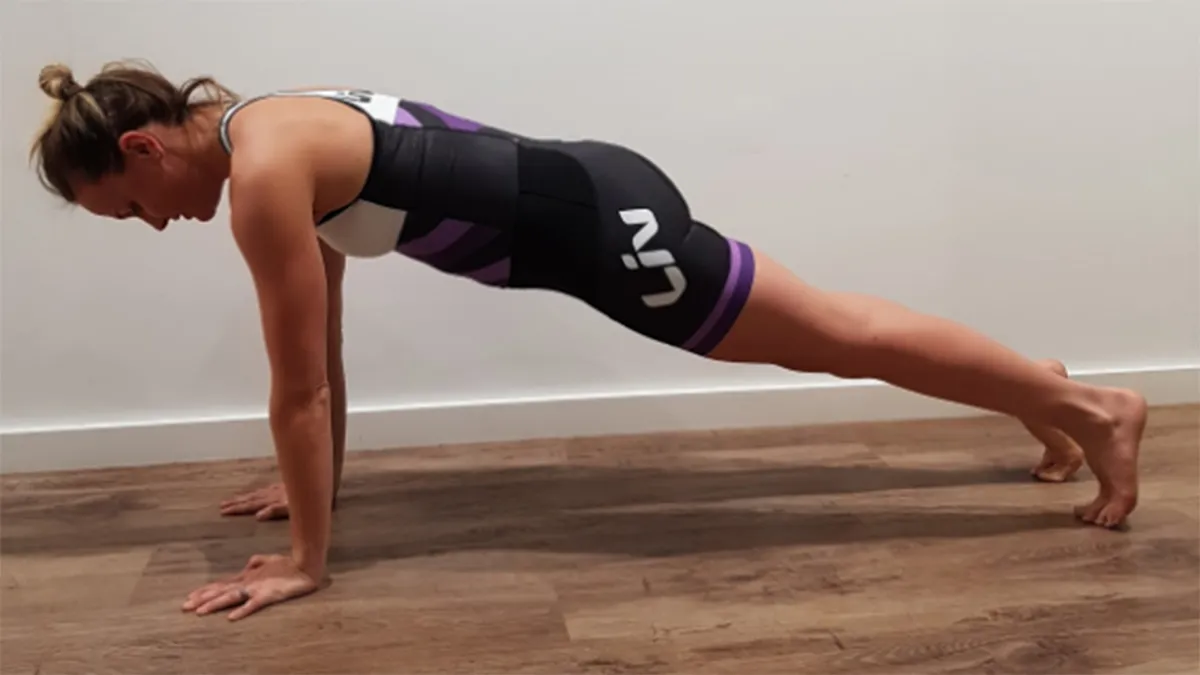This is a sponsored article in association with Liv Cycling
Strength and conditioning is about training your body in ways that will enhance performance and help avoid long-term injury, and cyclists in particular can benefit from this kind of cross-training.
The great news is that it can be done in a very short amount of time, so it’s easy to incorporate into a busy lifestyle.
- Best women's road bikes of 2018: 9 of the best
- Get your nutrition right with our guide to pre-ride, during and post-ride fuelling
- Lizzie Deignan shares her top tips for cycling while pregnant
Strength and conditioning is at its most effective when it’s used as a preventative measure, rather than a treatment — it’s why most pro cyclists spend just as much time in the gym as they do on the bike, conditioning their bodies so they can ride longer, harder and handle the stress of riding to stay injury free.
Despite its importance, it can be seen as a chore by many riders and sufficiently neglected until an issue becomes apparent, such as an injury or reduction in mobility.
Why do cyclists need to do strength and conditioning?

It’s all well and good being told you need to incorporate it into your cycling routine, but what are the actual benefits to dedicating precious time away from the bike and onto the floor mat?
Although cycling is deemed a low-impact sport, it is highly repetitive and only activates a small number of muscles in a constant forward motion.
Due to this repetitive nature, any small muscular imbalance you may have in your body will be exacerbated over time. If it’s not addressed, it can make your body overcompensate by making other muscle areas work harder, which puts you at risk of potential injury further down the line.
It’s especially vital for cyclists, because the movement required to pedal relies on core strength, but doesn’t build it.
This is due to your upper body weight on a bike being supported by the handlebars and saddle, which means the core muscles are not utilised during a ride. By building a strong core, not only will you limit the potential for future injury, but you will become a stronger rider in the process.
Emily Young, a Liv Ambassador and a qualified Pilates instructor, swears by strength training and believes all cyclists should incorporate it as part of their routine.
“By strengthening through resistance training, we allow our bodies to become better able to handle the stress from endurance workouts," Young explains. "Strength training creates a stable foundation for our bodies and by exploiting both the anaerobic and aerobic systems, it is undeniable at making you become a better, fitter and well-rounded athlete.”
6 ways to fit training into a busy schedule

We know how important strength and conditioning training is and what benefits can be reaped from a good routine, however the issue that most riders face is time. Unlike pro athletes, most of us don’t have the hours available to dedicate to the gym, so it’s a question of priorities and good planning.
Liv Cycling's network of ambassadors, who all work full-time, agree that the key to success is making sure it fits into your routine and lifestyle.
1. Do a short session straight after a ride
Alice Clare Thomas is a Liv ambassador who works full-time for an advertising company and part-time as a personal trainer and fitness blogger. This means her schedule can vary quite dramatically from week to week.
Despite this, she manages to fit in a couple of strength workouts a week, but rather than scheduling it in her plan as a standalone session, she pencils them straight after an easier session on the bike.
“By doing a strength and conditioning session straight after an easy ride, I’m nicely warmed up and I’m already in Lycra, so I can get straight onto a mat and begin before I’m even aware I’ve started," Thomas explains. "Plus, I don’t feel like I’m cutting into my rest days as it’s incorporated into my workout session, so it’s a lot easier to be motivated for it.”
2. Think of it as a long-term investment in yourself, your health and your performance
Debbie Bradley, a Liv ambassador who works as a learning and development manager for Cancer Research UK, is a successful Duathlete having won a gold medal in the 40–44 age category at the ITU World Duathlon Championships just a year after her first ever event.
Bradley understands the pressures of balancing work, training and family life and knows first-hand how hard it is to stay dedicated.

“Juggling my training around everything else is difficult enough, especially split over two sports (duathlon is a run-bike-run event), so adding another part like strength training has been tricky to say the least!" comments Bradley.
"At first, I would just completely ignore it and only focus on running or cycling, but I’ve recently experienced a few injuries, which could have been easily prevented, keeping me off the bike”.
Bradley now approaches strength training as a long-term investment to herself. “To stay motivated, I think of it as time I’m earning in the future on the bike. I’ll spend less time injured and become physically stronger so I can ride longer and harder as a result, making me a better rider overall.”
3. Get a routine you can do at home
Getting the environment for your training right is something worth considering and can definitely help with motivation, but heading to the gym can be time-consuming.
This is something Bradley struggled with previously, but has overcome with some smart advice. "With a bit of research and help from my coach, I’ve devised a routine which focuses entirely on body weight exercises and mobility, so it can be easily done with a mat at home in front of the TV, so it doesn’t interrupt with my life too much!”
4. Keep your sessions short

Bradley also advises to keep it short, as she explains further: “If you’ve ever worked out at home you’ll know it’s not quite as motivating as being around other people. For that reason, I keep it really short, no more than 20 minutes.
"I use lots of different 5-minute apps and do them most days rather than one big 1-hour session a week. This breaks it into more manageable chunks and my mind has less time to wander."
5. Get creative with your time and try a lunchtime workout
Alyssa Podesta, Liv Cycling UK Ambassador and company director, advises to be creative with finding your time.
“I would always try to schedule in a strength and conditioning workout around a lunch break at work if I could. It’s time where I would just sit at my desk or in the canteen not doing much, so by sneaking in a 15-minute session every couple of days it didn’t feel like it impacted my riding time at all.”
For Podesta, it’s noticeably improved her riding since she started. “It’s definitely helped, I feel much stronger on the bike and noticed my back doesn’t get sore after a long day of riding.”

6. Try the Liv Cycling bodyweight strength and conditioning exercises
If you're looking for a tried and tested selection of strength and conditioning exercises to complement your cycling, look no further. Liv Cycling has a workout developed by ambassador and fitness blogger Alice Thomas with 10 of the most effective exercises to keep you in tip top shape on the bike.